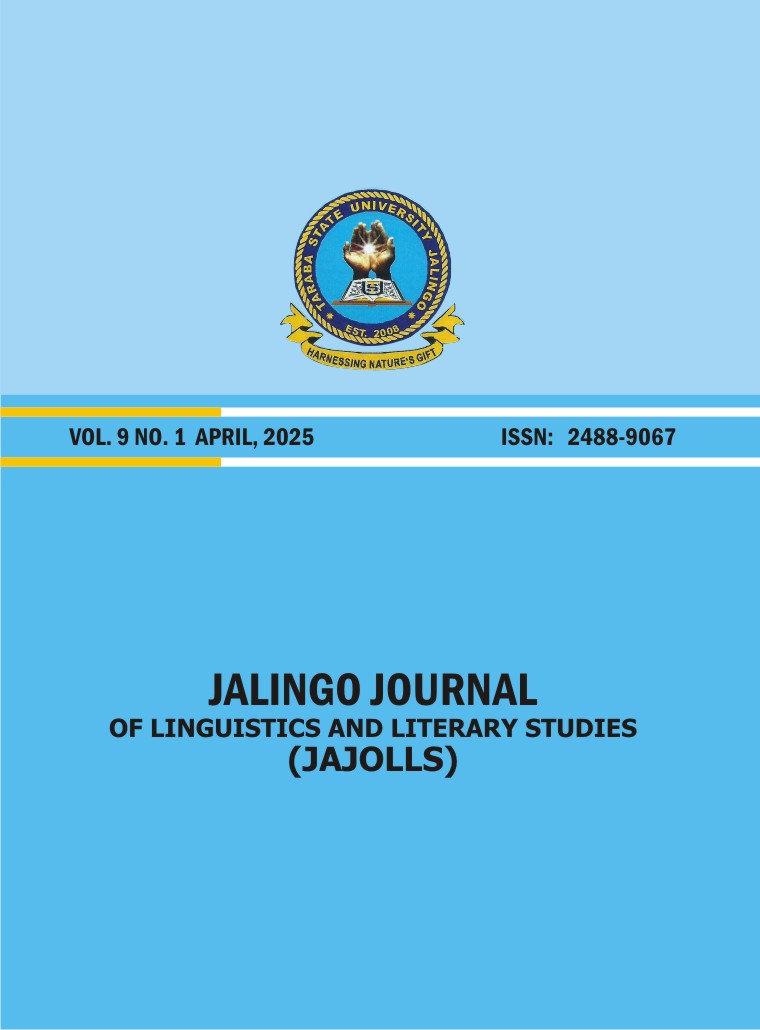Dialectal: A Study in Fulfulde Kesu'en and Kirii Dialects in Taraba and Adamawa States
Keywords:
Dialect, Variation, Kesu‘en, KiriiAbstract
The dynamic nature of language is evident in the dialects of the language. An understanding of dialects of a language is a reflection of the vibrancy of how that language is used in the communities that use it. Sociolinguistics as a field of study examines the relationship between language and society. It looks at how language varies between different social groups, as well as how language is used to convey social meaning. Studies on dialect variation which is one of the areas of interest in the field have been conducted to show the differences in language use among speakers from various regions or social groups. This study centres on the dialect variations in Fulfulde language of Adamawa and Taraba states with emphasis on Kesu'en and Kirii dialects. It is an investigation into the variability of grammar in dialectal variation. Structural dialectology of Peter Trudgill's perspective was adopted to analyze Kesu'en and Kirii dialects of the Fulfulde language from Adamawa and Taraba states. A variety of lexicons from the two dialects was used to determine the variations that exist within the neighboring dialects in the northeastern part of Nigeria. This study states that the Kesuen and Kirii dialects are variations of the Fulfulde language, differing in spelling, pronunciation, and lexical usage. However, these variances do not impede communication between speakers of the different dialects, as they are mutually intelligible. The study revealed instances where the Kesuen and Kirii dialects exhibit similarities in spelling and pronunciation of words. Additionally, it has been noted that certain lexical items in the two dialects display variation through the use of tone. It concludes that dialects are a strong indicator of cultural identity, reflecting the unique linguistic features that evolve within specific communities.

